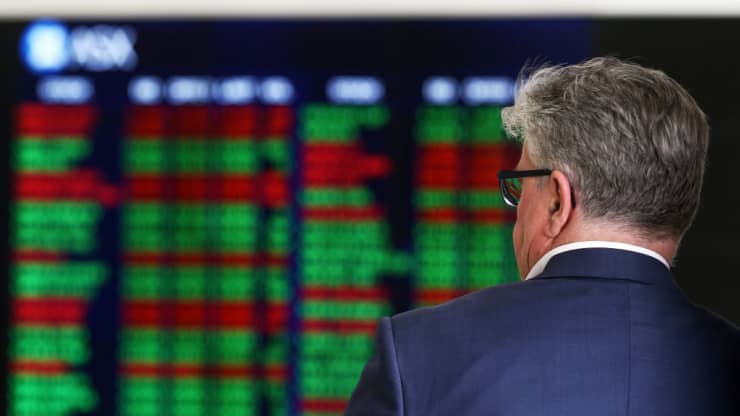
Asia-Pacific markets broadly struggled for gains on Monday as investors kept an eye on the Covid-19 situation across the region while oil prices tumbled 3%.
Australia’s benchmark ASX 200 was unable to hold on to modest gains and finished flat at 7,538.40. The Australian dollar changed hands at $0.7354 against the greenback, climbing from an earlier level around $0.7326. The Aussie fell from levels above $0.7400 following a resurgent dollar Friday on the back of strong nonfarm payrolls data.
Australia reported 280 new Covid cases over a 24-hour period on Sunday, with most of them in the populous state of New South Wales. Reports said that about 15 million people, or 60% of the country’s population, are under a strict lockdown.
In South Korea, the Kospi index slipped 0.3% to 3,260.42. The Kosdaq finished near flat at 1,060. Meanwhile, Hong Kong’s Hang Seng index reduced earlier gains of near 1% to trade up 0.37% at 26,275.64.
Chinese mainland shares traded higher: The Shanghai composite rose 1.05% to 3,494.63 while the Shenzhen component added 0.77% to 14,941.44.
Elsewhere, Indian shares traded mostly flat in afternoon trade while shares in Indonesia fell more than 1%. The Southeast Asian country is currently grappling with a serious Covid outbreak.
The Monday session in Asia follows after U.S. jobs data on Friday showed hiring rose at its fastest pace in nearly a year in July despite fears over the Covid-19 delta variant and tight labor supply issues.
“The market reacted positively to the strong non-farm payrolls data, with a risk-on move (not always the case this year),” said analysts from ANZ Research in a Monday morning note.
“The strength of data gives credence to the Fed’s view that the labour market will maintain momentum through the summer, even with the concerns around the Delta variant,” the analysts wrote, adding that while there is still a long way to go toward reaching full employment, Friday’s figures offset some of the pessimism that had been building.
Markets in Japan and Singapore are closed for public holidays.
China’s export growth unexpectedly slowed in July while imports also lost momentum. Exports rose 19.3% from a year ago, compared with a 32.2% gain in June and versus a market forecast of a 20.8% gain, Reuters reported. Imports rose 28.1% from a year earlier, less than a market forecast of a 33% increase.
“Extreme weather conditions and local Covid outbreaks have not helped while supply disruption have also hampered export activity,” said Rodrigo Catril, a senior foreign-exchange strategist at the National Australia Bank, in a morning note.
China reported data on Monday that showed consumer inflation slowed slightly, Reuters reported. The consumer price index in July rose 1% from a year ago, versus a 1.1% gain in the prior month and below the government target of around 3% this year, the news wire said.
Lack of consumer inflationary pressures are “not an obstacle for further policy easing, a topic likely to garner more attention if further economic slowdown becomes evident in the incoming data flow,” Catril said.
Currencies and oil
The U.S. dollar traded at 92.751 against a basket of its peers as of 4:02 p.m. HK/SIN, slipping from an earlier level around 92.921.
Oil prices fell more than 3% on Monday afternoon during Asian trading hours, as sentiment was likely weighed by a relatively strong dollar and worries that rising coronavirus cases could push back a recovery in fuel demand.
U.S. crude was down 3.49% at $65.9 a barrel while global benchmark Brent fell 3.34% to $68.34.